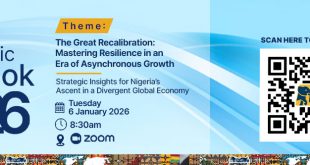
Wema-bank-liquidity-crisis-worsens
Wema Bank, one of Nigeria’s troubled lenders is battling heavy liquidity crisis despite distraction with the Davido ambassadorship curve.
Wema Bank may have a serious challenge withstanding the shocks Nigeria’s fragile economy might throw up as it is currently struggling with a liquidity squeeze.
There are fears that the lender might not have been able to shore up its liquidity at the end of the 2021 fiscal year. Liquidity ratio determines a corporate entity’s ability to meet its short-term debt obligations.
Also, the Ademola Adebise led financial institution’s capital adequacy ratio (CaR), which is the money it sets aside to cover risks, dipped to 12% in Q3 2021 from 15% at the end of 2020. This is the lowest capital adequacy ratio it has had in the last five years. The Central Bank of Nigeria’s (CBN) capital adequacy ratio requirement is 15% for tier banks and 10% for national banks. Wema Bank operates as a national lender.
The 3% dip in its capital adequacy ratio between December 2020 and September 2021 is giving Wema Bank stakeholders reasons for concerns.
Despite the fact that the bank is under pressure to increase its liquidity and capital, which led to its recent move to raise N40 billion from the Nigerian equity market in the first quarter of this year, ENigeria Newspaper has exclusively learned that shareholders are now concerned about the security of their investments with the bank.
Meanwhile, the bank grew revenue by 9.1% to N63.1 billion in the first nine months of 2021 from N57.8 billion in the prior period, driven major by operating income which went up by 32% and interest income which rose by 11.1%. Non-interest income was up marginally by 0.9%, despite the 68.9% increase in net fee and commission revenue.
Its growth was, however, hampered by the 68.9% decline in fees on electronic products, indicating that the bank’s well-publicised digital platform, Alat, is beginning to lose steam.
It is cheering news for Wema Bank’s stakeholders that its revenue raised at a higher pace than its expenses. While operating income went up by 32%, operating expenses, on the other hand, climbed by 20.1% during the period under review.
ENigeria Newspaper reports that its operating income stood at N39.2 billion and operating expenses was N31.9 billion, propelled largely by regulatory costs. AMCON levy went up 37.2% y-o-y to ₦3.9 billion, due to the growth in asset base and contingents, while NDIC premium increased 67.7% to ₦2.8 billion, on the back of growth in deposits.
The lender succeeded in trimming impairment charges on toxic assets by 56.5% to N0.81 billion from N1.87 billion in the corresponding period in the prior year, underpinned on impairment charges on loans and advances which went down by 99.4%. Consequently, Wema Bank non-performing loan (NPL) ratio improved slightly to 4.3% against 4.6% in December 2021.
In the meantime, Wema Bank post-tax profit soared 135.8% to N6.2 billion instead of N2.6 billion it made in Q3 2020. Its total assets also grew by 10.7% to N1.08 trillion as loans and advances increased by 10.3 to N397.3 billion and total customer deposits 9.3% to N879.8 billion during this period.
Wema Bank will have to strive hard to win investors’ confidence to be able to raise fresh funds to bolster its capital and liquidity as soon as possible.
 DailyrecordNg …Nigeria's hottest news blog
DailyrecordNg …Nigeria's hottest news blog








